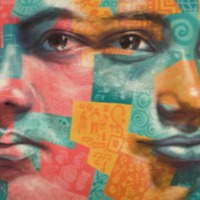
Deborah
There is an estimated 48,000 people living in modern slavery in Libya (GSI 2018). Libya is a major transit destination for migrants and refugees hoping to reach Europe by sea. Human trafficking networks have prospered amid lawlessness, created by the warring militias that have been fighting for control of territories since the toppling of Muammar Gaddafi in 2011. Highly organized trafficking and migrants smuggling networks that reach into Libya from Niger, Nigeria, Chad, Eritrea, Ethiopia, Somalia, Sudan, and other sub-Saharan states subject migrants to forced labor and forced prostitution through fraudulent recruitment, confiscation of identity and travel documents, withholding or non-payment of wages, debt bondage, and verbal, physical, and sexual abuse. In some cases, migrants reportedly pay smuggling fees to reach Tripoli, but once they cross the Libyan border they are sometimes abandoned in southern cities or the desert where they are susceptible to severe forms of abuse and human trafficking. Deborah left her home in Nigeria because her stepmother treated her badly. She wanted to become a fashion designer and when she met a man who promised to take her to Europe, she gladly accepted. It was a big surprise to her when after arriving in Libya, she was told that the journey stopped there, and she had to start working as a prostitute.
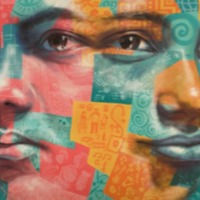
Miracle
There are an estimated 10,000 people living in modern slavery in Lebanon (GSI 2018). Men, women, and children among the estimated 1.3 million Syrian refugees in Lebanon are at high risk of sex trafficking and forced labour. There are some restrictions on Syrians’ ability to work legally in Lebanon and the enforcement of visas and residence permit laws increase this population’s vulnerability to trafficking. Syrians are commonly involved in the exploitation of other Syrians in Lebanon, particularly targeting refugees fleeing the conflict. Syrian children are reportedly vulnerable to forced early marriages—which can lead to commercial sexual exploitation and forced labour—and children displaced within the country continue to be subjected to forced labour, particularly by organized begging rings. Miracle left Nigeria after meeting someone who promised to help her find a job in Europe. On the way she found out she was pregnant and her smuggler attempted to force her to abort the pregnancy. When she arrived in Libya, Miracle and the other girls were locked up and sold to a Madam to be forced into prostitution. However, because Miracle was pregnant, she could not be sold. She spent two months locked inside a room before being taken to boat to cross over to Europe. When she arrived in Europe, she found that she had been deceived by promises of work.
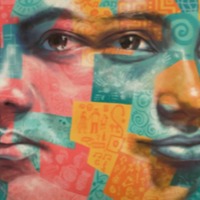
Nadia Murad (Narrative 2)
ISIS has singled out the Yazidi minority, notably its women and children, for particularly brutal treatment. In August 2014, ISIS fighters abducted hundreds, possibly thousands, of Yezidi men, women and children who were fleeing the IS takeover from the Sinjar region, in the north-west of the country. Hundreds of the men were killed and others were forced to convert to Islam under threat of death. Younger women and girls, some as young as 12, were separated from their parents and older relatives and sold, given as gifts or forced to marry ISIS fighters and supporters. Nadia was kidnapped by ISIS. when she was twenty-one years old. She was loaded on to a bus with other young women. Upon arrival in Mosul, the women were beaten, sold and forced to convert to Islam. She details how she feels about the complicity of ISIS women in the exploitation of Yazidis. After being passed from captor to captor, raped on a daily basis, and deprived of basic human comforts like food and companionship, Nadia managed to escape. She jumped over a wall, walked through the night, and knocked on the door of strangers who risked their lives hiding her until it was safe to get her to a refugee camp. From there, Nadia went to Germany.
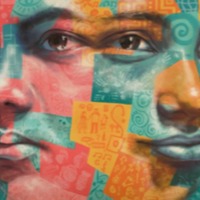
Kolab
There are an estimated 261,000 people living in modern slavery in Cambodia (GSI 2018). All of Cambodia's 25 provinces are sources for human trafficking. Cambodian women and girls move from rural areas to cities and tourist destinations where they are subjected to sex trafficking in brothels, beer gardens, massage parlors and salons. Cambodian men form the largest source of demand for children exploited in prostitution, although men from across the world travel to the country to engage in child sex tourism. When Kolab was seven years old he was told that he had been sold to the people he thought were his parents. At 13, he was sent to Phom Penh where he stayed with two men who offered him a place to live. These men introduced Kolab to another man who forced Kolab into commercial sexual exploitation. He was drugged, raped, and filmed having sex with other men. He was forced to sell drugs and steal and subjected to beatings and torture if he didn’t make enough money.
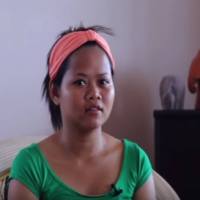
Bella
There are an estimated 261,000 people living in modern slavery in Cambodia (GSI 2018). All of Cambodia's 25 provinces are sources for human trafficking. Cambodian women and girls move from rural areas to cities and tourist destinations where they are subjected to sex trafficking in brothels, beer gardens, massage parlours and salons. Cambodian men form the largest source of demand for children exploited in prostitution, although men from across the world travel to the country to engage in child sex tourism. Bella is from Phnom Penh, Cambodia. She was trafficked for commercial sexual exploitation at the age of 12. Bella was able to find refuge in a faith-based organization.
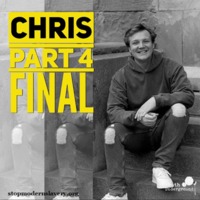
Chris Bates
There are an estimated 403,000 people living in modern slavery in the United States (GSI 2018). Sex trafficking exists throughout the country. Traffickers use violence, threats, lies, debt bondage and other forms of coercion to compel adults and children to engage in commercial sex acts against their will. The situations that sex trafficking victims face vary, many victims become romantically involved with someone who then forces them into prostitution. Others are lured with false promises of a job, and some are forced to sell sex by members of their own families. Victims of sex trafficking include both foreign nationals and US citizens, with women making up the majority of those trafficked for the purposes of commercial sexual exploitation. In 2015, the most reported venues/industries for sex trafficking included commercial-front brothels, hotel/motel-based trafficking, online advertisements with unknown locations, residential brothels, and street-based sex trafficking. Chris Bates was trafficked for sex at 16 years old in the United States. He created a social media account after feeling isolated at school which drew attention from older men who offered to pay him for images of himself. After running away from home, Chris need money for rent and placed an advert with an escort agency which led to him being trafficked for commercial sexual exploitation. He was able to escape his exploitation and begin the process of healing after meeting his boyfriend. Chris tells of the struggles being a male survivor of sex trafficking and the role religion played in his trafficking story. Chris as set up a grassroots organization, Overcome Exploitation, to help male, trans, and non-binary people who have experienced any kind of exploitation.

Rebecca
There are an estimated 403,000 people living in modern slavery in the United States (GSI 2018). Sex trafficking exists throughout the country. Traffickers use violence, threats, lies, debt bondage and other forms of coercion to compel adults and children to engage in commercial sex acts against their will. The situations that sex trafficking victims face vary, many victims become romantically involved with someone who then forces them into prostitution. Others are lured with false promises of a job, and some are forced to sell sex by members of their own families. Victims of sex trafficking include both foreign nationals and US citizens, with women making up the majority of those trafficked for the purposes of commercial sexual exploitation. In 2015, the most reported venues/industries for sex trafficking included commercial-front brothels, hotel/motel-based trafficking, online advertisements with unknown locations, residential brothels, and street-based sex trafficking. Rebecca was trafficked in Indiana, USA when she was twenty-one-years old. After being sexually assaulted at the age of fourteen, Rebecca began acting out and struggled with depression, anxiety, and began experimenting with drugs and alcohol. When she was twenty-one, she met a man almost twice her age and moved in with him just three weeks later. The man introduced her to crystal meth, controlled her movement and sold her to men for sex. Rebecca tells of how, despite leaving her trafficking situation, she struggled to come to terms with her exploitation and it affected her life for years afterwards
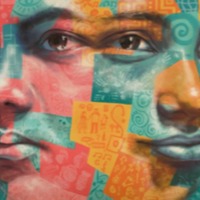
Caroline
There is an estimated 48,000 people living in modern slavery in Libya (GSI 2018). Libya is a major transit destination for migrants and refugees hoping to reach Europe by sea. Human trafficking networks have prospered amid lawlessness, created by the warring militias that have been fighting for control of territories since the toppling of Muammar Gaddafi in 2011. Highly organized trafficking and migrants smuggling networks that reach into Libya from Niger, Nigeria, Chad, Eritrea, Ethiopia, Somalia, Sudan, and other sub-Saharan states subject migrants to forced labor and forced prostitution through fraudulent recruitment, confiscation of identity and travel documents, withholding or non-payment of wages, debt bondage, and verbal, physical, and sexual abuse. In some cases, migrants reportedly pay smuggling fees to reach Tripoli, but once they cross the Libyan border they are sometimes abandoned in southern cities or the desert where they are susceptible to severe forms of abuse and human trafficking. Caroline thought she was travelling to Europe with her boyfriend, but he sold her to a woman who took her to Libya and sold her on again to another man. She was taken to Tripoli and forced into prostitution. After Caroline escaped prostitution, she went to live in a residential house. But this house was raided and she was put in a prison where she was subjected to physical and sexual abuse daily. She was finally able to escape the prison by jumping a fence and found herself at a place where people were getting on a boat to Italy. She joined them, but the journey was not easy.
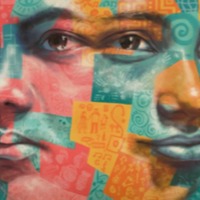
Aizere
There are an estimated 794,000 people living in conditions of modern slavery in Russia (GSI 2018). Women and children are subjected to commercial sexual exploitation and sex trafficking in prostitution and pornography. Women are lured by the promise of lucrative employment and a new location, travelling to the country under the pretence of legitimate employment and a better life. However, when they arrive, they are forced into prostitution in brothels, hotels and saunas. There is also evidence of traffickers advertising sexual services of children online. However, despite the evidence of sex trafficking in Russia, it remains an under-recognised area of enslavement in the country. Aizere*, A 16-year old girl from Kazakhstan was sold by her parents to a man who promised her work at a market. Her documents were forged and upon arrival in Russia she was forced into prostitution.
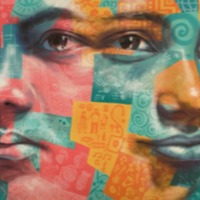
Rayana
There are an estimated 794,000 people living in conditions of modern slavery in Russia (GSI 2018). Forced labour remains the predominant form of human trafficking in the country. Labour trafficking has been reported in the construction, manufacturing, logging, textile, and maritime industries, as well as in sawmills, agriculture, sheep farms, grocery and retail shops, restaurants, waste sorting, street sweeping, domestic service, and forced begging. Many migrant workers experience exploitative labour conditions characteristic of trafficking cases, such as withholding of identity documents, non-payment for services rendered, physical abuse, lack of safety measures, or extremely poor living conditions. Rayana*, an 18-year old woman from Kazakhstan, was trafficked to Russia after a man offered her work near Moscow. But when she arrived, she was forced to work in a shop with two other girls. Rayanna was subjected to physical and sexual violence. She finally escaped one night by clinging to the back of a lorry.

Medina
There are an estimated 794,000 people living in conditions of modern slavery in Russia (GSI 2018). Forced labour remains the predominant form of human trafficking in the country. Many migrant workers experience exploitative labour conditions characteristic of trafficking cases, such as withholding of identity documents, non-payment for services rendered, physical abuse, lack of safety measures, or extremely poor living conditions. Women and children are also subjected to commercial sexual exploitation and sex trafficking in prostitution and pornography. Medina*, a 15-year-old girl from Kazakhstan was trafficked after being sold by her parents. The man who bought her forged her birth certificate and took her to Russia where she was forced to do domestic work and was subjected to sexual exploitation.
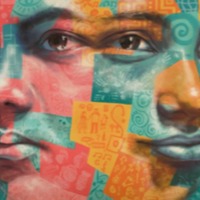
Rebekah Begay
There are an estimated 403,000 people living in modern slavery in the United States (GSI 2018). Sex trafficking exists throughout the country. Traffickers use violence, threats, lies, debt bondage and other forms of coercion to compel adults and children to engage in commercial sex acts against their will. The situations that sex trafficking victims face vary, many victims become romantically involved with someone who then forces them into prostitution. Others are lured with false promises of a job, and some are forced to sell sex by members of their own families. Victims of sex trafficking include both foreign nationals and US citizens, with women making up the majority of those trafficked for the purposes of commercial sexual exploitation. In 2015, the most reported venues/industries for sex trafficking included commercial-front brothels, hotel/motel-based trafficking, online advertisements with unknown locations, residential brothels, and street-based sex trafficking. Rebekah Begay was sexual abused at a young age by her family and by her first boyfriend. Begay developed a drug addiction and ran away, flying to Atlanta to live with her sister. When she was 16 years old, Begay met a man on a dating website, but after a few months he took her to a house and sold her into prostitution. She was able to run away when one of the men she had been sold to was distracted but the experience had lasting effects.
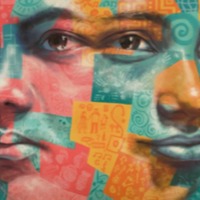
Y
There are an estimated 136,000 people living on conditions of modern slavery in the United Kingdom (Global Slavery Index 2018). According to the 2017 annual figures provided by the National Crime Agency, 5, 145 potential victims of modern slavery were referred through the National Referral Mechanism in 2017, of whom 2,454 were female, 2688 were male and 3 were transgender, with 41% of all referrals being children at the time of exploitation. People are subjected to slavery in the UK in the form of domestic servitude, labour exploitation, organ harvesting and sexual exploitation, with the largest number of potential victims originating from Albania, China, Vietnam and Nigeria. This data however does not consider the unknown numbers of victims that are not reported. Y was trafficked from Nigeria to the United Kingdom at five years old. She was forced to clean, prevented from leaving the house or going to school and made to look after the family’s baby. Y was physically, emotionally and mentally abused by the family that had bought her. When she was 11, the family moved back to Nigeria and sold Y to their friend. She remained in the UK and was forced to work long hours doing housework. When she was 14, she was also forced to make cakes for the woman to sell and make money. She finally ran away and went to live with a foster family while the police and social services worked on her case.
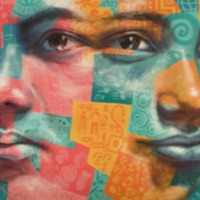
Emelia
There are an estimated 136,000 people living on conditions of modern slavery in the United Kingdom (Global Slavery Index 2018). According to the 2017 annual figures provided by the National Crime Agency, 5, 145 potential victims of modern slavery were referred through the National Referral Mechanism in 2017, of whom 2,454 were female, 2688 were male and 3 were transgender, with 41% of all referrals being children at the time of exploitation. People are subjected to slavery in the UK in the form of domestic servitude, labour exploitation, organ harvesting and sexual exploitation, with the largest number of potential victims originating from Albania, China, Vietnam and Nigeria. This data however does not consider the unknown numbers of victims that are not reported. Emelia was trafficked from Romania to the UK by a man who kept her for 3 months. Subjected to sexual violence, she was forced into prostitution where she was raped by at least seven or eight men daily. Emelia was able to escape after borrowing a girl’s phone and calling her parents. However, the man who trafficked her escaped the police and she remains is scared of retribution
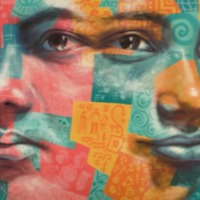
Tanya
The Global Slavery Index 2018 estimates that on any given day in 2016, an estimated 3.6 million men, women and chidlren were living in modern slavery in Europe and Central Asia (GSI 2018). People are subjected to exploitation in forced labour, debt bondage and forced sexual exploitation. Government response in Europe is particularly strong with a number of regional bodies holding them account and monitoring responses, and while countries in Central Asia have taken steps to tack modern slavery, more needs to be done. Tanya was trafficked from Ukraine after being offered a job in another country. Her brother was sick and in need of an operation and her family was poor. She was sold and forced into prostitution.

Anya and Katerina
There are an estimated 509,000 people living in modern slavery in Turkey (GSI 2018). As a source, transit and destination location for immigration, human trafficking is prevalent in the country. Trafficking victims in Turkey are primarily from Central and South Asia, Eastern Europe, Azerbaijan, Indonesia, Morocco, and Syria. Women are mainly trafficked to Turkey as sex workers. Anya and Katerina were trafficked to Turkey by a woman named Olga who offered them a job. She took them to a café where they were taken by men to an apartment. That first night they were told to get dressed for work, taken to a hotel, and forced into prostitution.
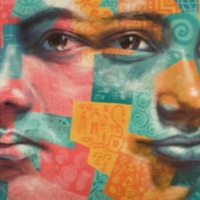
Amenze
There is an estimated 48,000 people living in modern slavery in Libya (GSI 2018). Libya is a major transit destination for migrants and refugees hoping to reach Europe by sea. Human trafficking networks have prospered amid lawlessness, created by the warring militias that have been fighting for control of territories since the toppling of Muammar Gaddafi in 2011. Highly organized trafficking and migrants smuggling networks that reach into Libya from Niger, Nigeria, Chad, Eritrea, Ethiopia, Somalia, Sudan, and other sub-Saharan states subject migrants to forced labour and forced prostitution through fraudulent recruitment, confiscation of identity and travel documents, withholding or non-payment of wages, debt bondage, and verbal, physical, and sexual abuse. In some cases, migrants reportedly pay smuggling fees to reach Tripoli, but once they cross the Libyan border they are sometimes abandoned in southern cities or the desert where they are susceptible to severe forms of abuse and human trafficking. Amenze is a survivor of trafficking to Libya. She received support from Programme X including a flight to voluntarily return to Nigeria, counselling, financial assistance and business skills training. With the support of NGO Y, Amenze learned how to be a seamstress, and is currently working as a fashion designer.
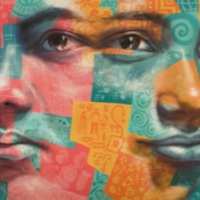
V.
There are an estimated 145,000 people liing in conditions of modern slavery in Italy (GSI 2018). Italy is a destination, transit, and source country for women, children, and men subjected to sex trafficking and forced labour. Victims originate from Nigeria, Romania, Morocco, China, and other countries. Female victims are often subjected to sex trafficking in Italy after accepting promises of employment as dancers, singers, models, restaurant servers, or caregivers. Romanian and Albanian criminal groups force Eastern European women and girls into commercial sex. V was thirteen years old when she was trafficked to Italy by a boy she believed loved her and who had asked her to marry him. Upon arrival in Italy, V was locked in a hotel room, raped, beaten and forced into prostitution. After three weeks of exploitation, V was arrested and deported back to Albania.
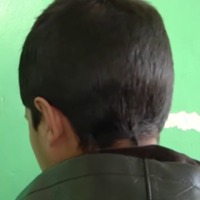
Yahya
Afghanistan is a source, transit, and destination country for men, women, and children trafficked for the purposes of forced labour and commercial sexual exploitation. Afghan boys and girls are trafficked within the country for commercial sexual exploitation, forced marriage to settle debts or disputes, forced begging, as well as forced labour or debt bondage in brick kilns, carpet-making factories, and domestic service. Afghan children are also trafficked to Iran and Pakistan for forced labuor, particularly in Pakistan’s carpet factories, and forced marriage. Moreover, both government and non-state groups use children in combat, with the Taliban forcibly recruiting and using children as suicide bombers. 11 year old Yahya was living in poverty when he was sold by his parents to smugglers in Afghanistan. He was then handed over to the Taliban and was trained as a suicide bomber. However, rather than carry out what he had been trained for, Yahya surrendered himself to Afghan security forces. He is now in the care of the Afghan state.